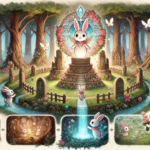Chagaras is a term that has gained interest in cultural, historical and anthropological circles yet it remains mysterious to many. Whether used to refer to a specific ethnic group an artifact or a regional tradition the word “Chagaras” is deeply rooted in cultural significance. This article explores the origins meanings and evolving role of Chagaras in contemporary society.
What Are Chagaras?
The term Chagaras has multiple interpretations depending on the context in which it is used. In some regions, it refers to traditional clothing, jewelry, or ceremonial artifacts. In others, it may describe a community or ethnic group associated with a specific region. Understanding Chagaras requires a multi-faceted approach that blends historical documentation, linguistic exploration, and cultural heritage studies.
Historical Background of Chagaras
Origin and Etymology
The origin of the word “Chagaras” is not definitively documented. However, some linguists believe it stems from a blend of indigenous terms found in Central Asian or Eastern European dialects. The word may be a derivation from local expressions signifying craftsmanship, decoration, or spiritual significance.
Chagaras in Ancient Societies
In ancient times Chagaras were often seen as symbols of status and spirituality. If referring to objects, they were intricately designed, used in ceremonies, and passed down as heirlooms. These artifacts reflected the beliefs and traditions of the communities, often incorporating materials like precious stones, bronze, and dyed fabrics.
Cultural Significance
Symbolism in Rituals
In many traditional societies, Chagaras played an essential role in rituals and rites of passage. They were used during weddings, funerals, and coming-of-age ceremonies. The designs often included motifs representing fertility, protection, unity, and the spirit world.
Expression of Identity
Chagaras also served as expressions of cultural identity. For example, each tribe or village might have had its own unique version of a Chagara showcasing specific styles embroidery or carving techniques. They symbolized a person’s heritage rank or familial ties.
Types of Chagaras
Chagaras can be broadly categorized based on their form and function:
| Type | Description |
| Wearable Chagaras | Jewelry amulets or pendants worn during festivals or rituals |
| Ceremonial Chagaras | Items used during specific spiritual or cultural ceremonies |
| Decorative Chagaras | Artistic pieces used to adorn homes, shrines, or community centers |
| Functional Chagaras | Everyday tools with cultural engravings, combining utility with tradition |
Regional Variations
Central Asia
In Central Asian cultures, Chagaras are often associated with nomadic tribes and their vibrant textile traditions. They are seen in the form of embroidered garments, headwear, or protective charms.
South America
In some South American indigenous communities, “Chagaras” refers to woven artifacts or handcrafted jewelry, often made with beads, feathers, or stones. These reflect the deep connection between art and nature.
Africa
In African tribes, similar items to Chagaras may be used during spiritual healing sessions, believed to ward off evil spirits or bring prosperity.
Modern-Day Relevance
Cultural Revival
With the global interest in indigenous knowledge and traditions Chagaras have seen a cultural revival. Many artisans are revisiting ancient designs and giving them modern relevance through fashion jewelry or museum exhibits.
Academic Interest
Anthropologists and historians are increasingly documenting Chagaras as part of intangible cultural heritage. These studies are crucial for preserving indigenous identities and passing down wisdom to younger generations.
In Fashion and Art
Modern designers have incorporated Chagaras into contemporary fashion. Motifs and patterns derived from Chagaras are used in fabrics, accessories, and visual art. This cross-cultural adoption brings global attention to traditional forms of expression.
Challenges to Preservation
Loss of Knowledge
One of the biggest threats to the continuity of Chagaras is the loss of traditional knowledge. As elders pass away and communities modernize, fewer young people are learning the art of making or interpreting Chagaras.
Commercialization
While the growing popularity of Chagaras is encouraging, there’s a risk of over-commercialization. When artifacts are mass-produced for profit, their spiritual or cultural meanings can be lost.
Cultural Appropriation
Another significant issue is cultural appropriation. Designers or companies outside the communities may use Chagara-inspired designs without understanding their meaning or giving credit, which can lead to exploitation and disrespect.
Ways to Support and Preserve Chagaras
Here are several actionable steps for individuals and communities to help safeguard Chagaras:
- Support Indigenous Artisans: Purchase directly from the makers or cooperatives.
- Promote Cultural Education: Encourage schools to include local traditions in their curriculum.
- Visit Museums and Cultural Centers: Learn about the deeper meanings behind Chagara artifacts.
- Participate in Cultural Festivals: These events often feature live demonstrations of how Chagaras are made.
- Digital Documentation: Support efforts to create online archives of Chagara designs and histories.
Chagaras in Literature and Media
Chagaras have also been featured in books films and documentaries focusing on cultural heritage. They often represent themes of identity memory and transformation. These representations help bring Chagaras into mainstream conversation and inspire further exploration.
Conclusion
The story of Chagaras is one of heritage beauty and resilience. Whether seen as artifacts cultural expressions or spiritual tools they offer a window into the traditions and values of diverse communities. In a world that is rapidly modernizing, preserving the legacy of Chagaras becomes not just a cultural obligation but a universal responsibility. By understanding and respecting their origins supporting their creators and educating others we can ensure that Chagaras continue to inspire and connect us across generations and geographies.





